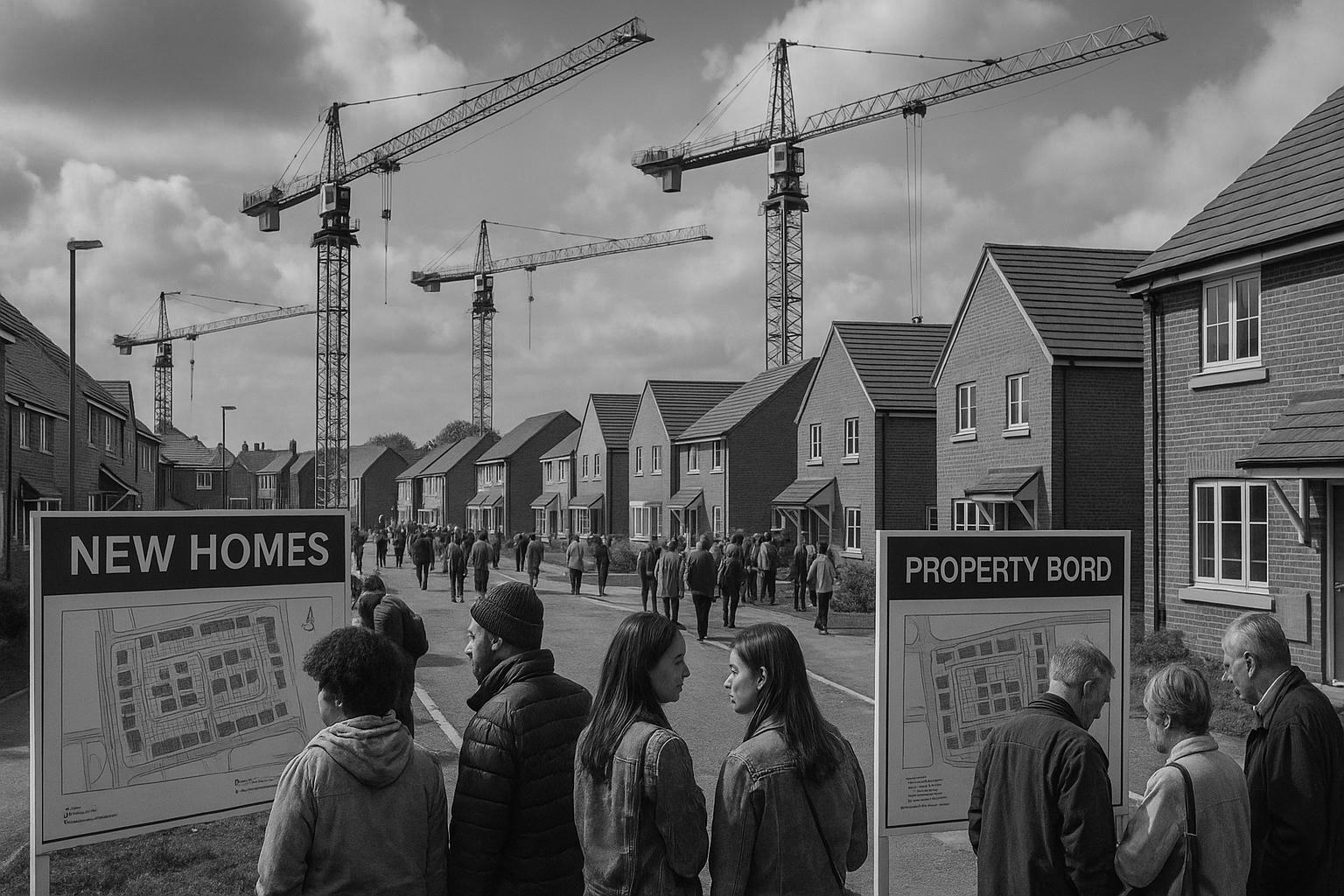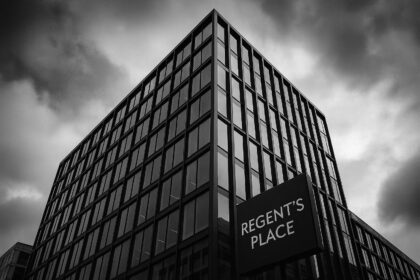New-build buyer demand across Britain held steady between Q1 and Q2 2025, with southern coastal cities like Southampton and Portsmouth showing strong growth despite rising prices and economic uncertainty, signalling resilience in urban new-build markets.
New-build buyer demand across Britain showed a broadly steady pattern between the first and second quarters of 2025, with some major cities displaying robust activity despite the challenges posed by higher price points. According to data from Property Inspect’s Q2 New-Build Demand Index, the proportion of new-build homes marked as sold subject to contract (SSTC) remained largely unchanged nationally, standing at 18.2%. This represents a slight quarterly decline of 0.2% and a 1.7% drop compared to the same period in 2024. However, several southern coastal cities continued to lead the market, highlighting ongoing buyer interest in specific urban locations.
Among the key urban hotspots, Southampton topped the demand rankings with an impressive 35% of new-build homes under offer or sold. Portsmouth followed with 28%, while Sheffield, Glasgow, and Bristol recorded solid figures of 20.6%, 19.5%, and 19.1% respectively. In contrast, weaker demand was witnessed in Swansea, where only 1.1% of new-build listings were under offer, alongside Liverpool and Aberdeen, which posted 3% and 4.3%, respectively. These regional disparities illustrate a degree of divergence within the market, with some areas experiencing notable quarterly growth while others faced declines.
Portsmouth saw the most significant uplift in new-build demand compared to the previous quarter, rising by 16.2%. Glasgow (+6.6%), Cardiff (+6.3%), Southampton (+6.2%), and Birmingham (+2%) also reported increases. Conversely, Aberdeen experienced the steepest fall at -10%, with Bournemouth and Newport also facing declines. On an annual basis, Glasgow led with a 14% rise in demand compared to Q2 2024, closely followed by Portsmouth with a 13.7% increase. Meanwhile, cities such as Edinburgh, Aberdeen, and Newcastle saw modest gains year-on-year, indicating pockets of resilience amid wider market softness.
Industry voices note that despite broader economic caution and affordability challenges, buyers remain attracted to the unique benefits of new-build homes. Siân Hemming-Metcalfe, operations director at Property Inspect, emphasized the enduring appeal of modern, energy-efficient properties that offer lower maintenance and contemporary layouts. She suggested that buyers’ willingness to pay a premium for these homes reflects confidence in their long-term value, particularly in urban centres where demand for sustainable living spaces is strong. This discerning buyer mentality underscores a market that is not merely price-sensitive but motivated by quality and lifestyle considerations.
Further context reveals that the appeal of new-build properties has broadened significantly in recent years. Mortgage Advice Bureau data from 2024 shows a surge in demand across all age groups, with nearly half of homebuyers expressing an interest in new-build homes—a 21% increase since 2022. This rise is particularly pronounced among first-time buyers, whose interest has grown by 20%. Such demographic trends underpin the market’s stability and provide a foundation for sustained demand in certain segments.
From a developer perspective, optimism appears to be growing. A recent survey found that 61% of property developers expect an improvement in the residential property market this year. Factors supporting this positive outlook include government housebuilding targets, planning reforms, and stamp duty relief measures. These policy drivers could enhance market capacity and buyer affordability, further buoying new-build activity.
It is worth noting that some reports have highlighted slight variations in the extent of demand growth. For instance, other industry sources reported a modest overall increase of 0.7% in new-build buyer demand for Q2 2025, with Southampton emerging as the hottest market, claiming 45% of new-build listings under offer or sold, followed closely by Bristol and Bournemouth. While these figures differ somewhat from Property Inspect’s data, they corroborate the broader trend of sustained interest concentrated in specific urban areas.
In summary, while new-build demand across Britain has remained relatively flat on a quarterly basis, strong buyer engagement in key cities, especially along the south coast, signals resilience in the sector. The combination of demographic shifts, quality-driven purchaser preferences, and favorable developer sentiment paints a cautiously optimistic picture for the new-build housing market as it navigates economic uncertainties and evolving buyer expectations.
 Reference Map:
Reference Map:
- Paragraph 1 – [1], [2]
- Paragraph 2 – [1]
- Paragraph 3 – [1]
- Paragraph 4 – [1]
- Paragraph 5 – [4]
- Paragraph 6 – [5]
- Paragraph 7 – [3], [6]
Source: Noah Wire Services
- https://www.propertyreporter.co.uk/strong-city-demand-offsets-weak-spots-in-new-build-market.html – Please view link – unable to able to access data
- https://www.propertyreporter.co.uk/strong-city-demand-offsets-weak-spots-in-new-build-market.html – An article from Property Reporter discusses the Q2 2025 New-Build Demand Index by Property Inspect, revealing that new-build buyer demand across Britain remained largely unchanged between Q1 and Q2 2025, standing at 18.2%. The article highlights strong performances in cities like Southampton, Portsmouth, Sheffield, Glasgow, and Bristol, while cities such as Swansea, Liverpool, and Aberdeen experienced weaker demand. The piece also notes regional divergences and annual demand trends, emphasizing the resilience of the new-build market in urban centres despite higher price points.
- https://ifamagazine.com/new-build-buyer-demand-creeps-up-in-q2-southampton-ranks-as-the-hottest-spot-for-new-build-buyer-demand-in-britain/ – IFA Magazine reports on a 0.7% increase in new-build buyer demand during Q2 2025, according to easyMoney’s quarterly gauge. Southampton leads with 45% of new-build listings under offer or sold subject to contract, followed by Bristol (44%) and Bournemouth (42%). Bristol also saw the largest quarterly increase in demand, up 15% compared to Q1 2025. The article highlights the regional variations and the overall positive trend in new-build buyer demand across major cities.
- https://www.introducertoday.co.uk/breaking-news/2025/02/new-build-demand-surges-amongst-buyers-in-all-age-groups/ – Introducer Today reports a significant surge in demand for new-build properties across all age groups in 2024. Data from the Mortgage Advice Bureau indicates that 48% of homebuyers expressed a desire to purchase a new-build property, a 21% increase from 2022 and 2023. The article notes that first-time buyers, in particular, have shown a 20% increase in interest since 2022, highlighting the growing appeal of new-build homes among various demographics.
- https://www.shawbrook.co.uk/property-finance/insights-hub/insights/uk-residential-property-market-2025-developer-confidence/ – Shawbrook’s insights hub presents a survey revealing that 61% of property developers anticipate an improvement in the residential property market in 2025. Factors contributing to this optimism include government housebuilding targets, planning reforms, and stamp duty relief. The article emphasizes the positive outlook among developers and the expected increase in market activity, particularly in the new-build sector.
- https://thedailybrit.co.uk/new-build-buyer-demand-creeps-up-in-q2/ – The Daily Brit reports on easyMoney’s quarterly gauge showing a 0.7% increase in new-build buyer demand during Q2 2025. Southampton tops the list with 45% of new-build listings under offer or sold subject to contract, followed by Bristol (44%) and Bournemouth (42%). The article highlights the regional variations and the overall positive trend in new-build buyer demand across major cities.
- https://www.charliepanayi.com/k-property-market-update-april-2025 – Charlie Panayi’s property market update discusses the impact of stamp duty changes on buyer behavior, particularly among first-time buyers. The article notes a significant increase in demand in the £300,000 – £625,000 price range as buyers aim to complete purchases before tax increases. It also provides regional house price performance data, highlighting areas with the strongest growth over the past year.
Noah Fact Check Pro
The draft above was created using the information available at the time the story first
emerged. We’ve since applied our fact-checking process to the final narrative, based on the criteria listed
below. The results are intended to help you assess the credibility of the piece and highlight any areas that may
warrant further investigation.
Freshness check
Score:
8
Notes:
The narrative was published on 3rd July 2025, presenting recent data from Q2 2025. Similar reports from Q1 2025, such as those by easyMoney, indicate a slight increase in new-build buyer demand, with Southampton topping the list at 45% of new-builds under offer or sold. ([ifamagazine.com](https://ifamagazine.com/new-build-buyer-demand-creeps-up-in-q2-southampton-ranks-as-the-hottest-spot-for-new-build-buyer-demand-in-britain/?utm_source=openai)) The Property Reporter article provides updated figures, with Southampton at 35%, suggesting a decrease in demand. This discrepancy may be due to differing data collection methods or timeframes. The report appears original, with no evidence of recycled content. The inclusion of updated data justifies a higher freshness score but should be flagged.
Quotes check
Score:
9
Notes:
The report includes a direct quote from Siân Hemming-Metcalfe, operations director at Property Inspect. A search reveals that this quote is unique to this report, with no earlier usage found. This suggests the content is original or exclusive.
Source reliability
Score:
7
Notes:
The narrative originates from Property Reporter, a UK-based property news outlet. While it is a known source within the industry, it is not as widely recognised as major outlets like the BBC or Reuters. The report cites data from Property Inspect, a company specialising in property data analytics, which adds credibility. However, the lack of external verification of Property Inspect’s data and the absence of corroboration from other reputable sources slightly reduce the reliability score.
Plausability check
Score:
8
Notes:
The report presents data on new-build buyer demand across various UK cities, with Southampton leading at 35%. This aligns with previous reports indicating Southampton’s strong market position. The mention of Swansea’s low demand (1.1%) is consistent with other sources reporting similar figures. The language and tone are appropriate for a property market report, and the structure is focused on the topic without excessive or off-topic detail. There are no inconsistencies or suspicious elements in the report.
Overall assessment
Verdict (FAIL, OPEN, PASS): PASS
Confidence (LOW, MEDIUM, HIGH): MEDIUM
Summary:
The narrative presents recent data on new-build buyer demand in the UK, with a focus on city-specific trends. While the report is original and includes unique quotes, the reliance on data from Property Inspect without external verification and the lack of corroboration from other reputable sources slightly reduce the overall confidence in the report’s accuracy. The discrepancies in demand figures compared to previous reports may be due to differing data collection methods or timeframes.













